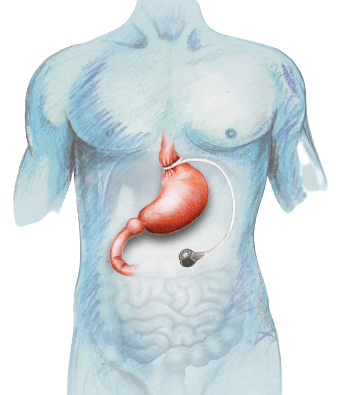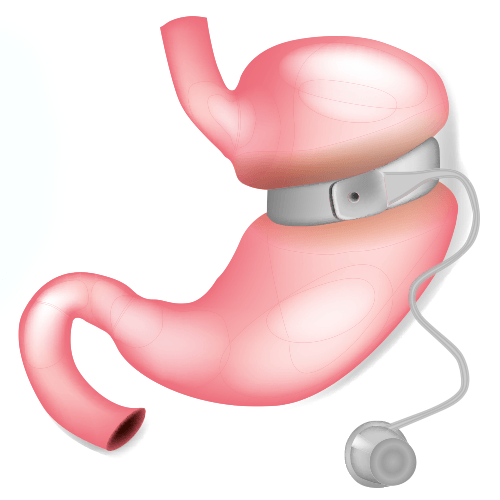Call 1300 849 118
Weight Loss Surgery - Gastric Band or Lapband Surgery
What is Lapband or Gastric Band Surgery?
The Adjustable Gastric Band, also known as the Gastric Band or Lapband, is an inflatable band that is wrapped over the top region of the stomach, forming a tiny stomach pouch above the band and the rest of the stomach below it.
About the Gastric Band Procedure
Gastric Band Weight Loss Surgery Benefits
- Reduces the amount of food the stomach can hold
- Induces excess weight loss of approximately 40 – 50%
- Involves no cutting of the stomach or rerouting of the intestines
- Has the lowest rate of early postoperative complications and mortality among the approved bariatric procedures
- Has the lowest risk for vitamin/mineral deficiencies
Disadvantages of Gastric Band Weight Loss Surgery
- Slower and less early weight loss than other surgical procedures
- A greater percentage of patients failing to lose at least 50% of excess body weight compared to the other surgeries commonly performed
- Requires a foreign device to remain in the body
- Can result in possible band slippage or band erosion into the stomach in a small percentage of patients
- Can have mechanical problems with the band, tube or port in a small percentage of patients
- Can result in dilation of the esophagus if the patient overeats
- Requires strict adherence to the postoperative diet and to postoperative follow-up visits
- The highest rate of re-operation
- Most large academic centres stopped or close to stop doing lap band
Gastric Band Procedure
Gastric Band surgery is performed laparoscopically under general anaesthesia.
Your surgeon
- makes four small incisions in the abdominal wall and inserts a laparoscope, a lighted fibre optic tube with a camera attached to its end, into one incision.
- Small surgical instruments are inserted through the other incisions. Your surgeon will be able to see the internal structures of the abdomen on a monitor with images sent from the camera.
- The band is placed around the upper part of the stomach to divide it into two sections: a smaller, upper pouch and a larger, lower pouch.
- The band is then secured and fastened with sutures.
- The band is inflated with sterile saline until it attains the correct diameter to optimally constrict the stomach. In order to adjust the band, an access port connected to the band is placed under the skin of the abdomen.
- This enables your surgeon to loosen (deflate) or tighten (inflate) the band by injecting or aspirating saline solution as needed.
- Finally, the incisions are closed.
Questions Relating to the Gastric Band
Is Gastric Banding always performed by laparoscopic (keyhole) Surgery?
Does the Gastric Band limit any physical activity?
How is the Band adjusted?
CONSULTING LOCATIONS
- St George Private Hospital 1 South St, Kogarah, 2217, New South Wales, Australia
- Figtree Private Hospital 1 Suttor Pl, Figtree, 2525, NSW, Australia
- Sydney South West Private Hospital 24 Bigge St, Liverpool, NSW, Australia
- Coffs Harbour 53 Moonee Street, Coffs Harbour New South Wales 2450, Australia
- Windsor 267 George Street, Windsor New South Wales 2756, Australia
HOSPITAL LOCATIONS
About Us
Our focus is on helping our patients lose weight and stay a healthy weight thereafter. Read more about us...
Clinics at
Dr Jason Maani is not a financial service provider. The information provided regarding payment options, including private health funds, superannuation access, and other financial assistance services, is for information purposes only. These services are independent of Dr Jason Maani, and patients are responsible for directly contacting the relevant providers to understand the terms, eligibility, and process for utilising these options for their procedure costs. Dr Jason Maani does not provide financial or insurance advice and recommends patients seek independent financial or professional advice regarding payment methods.









